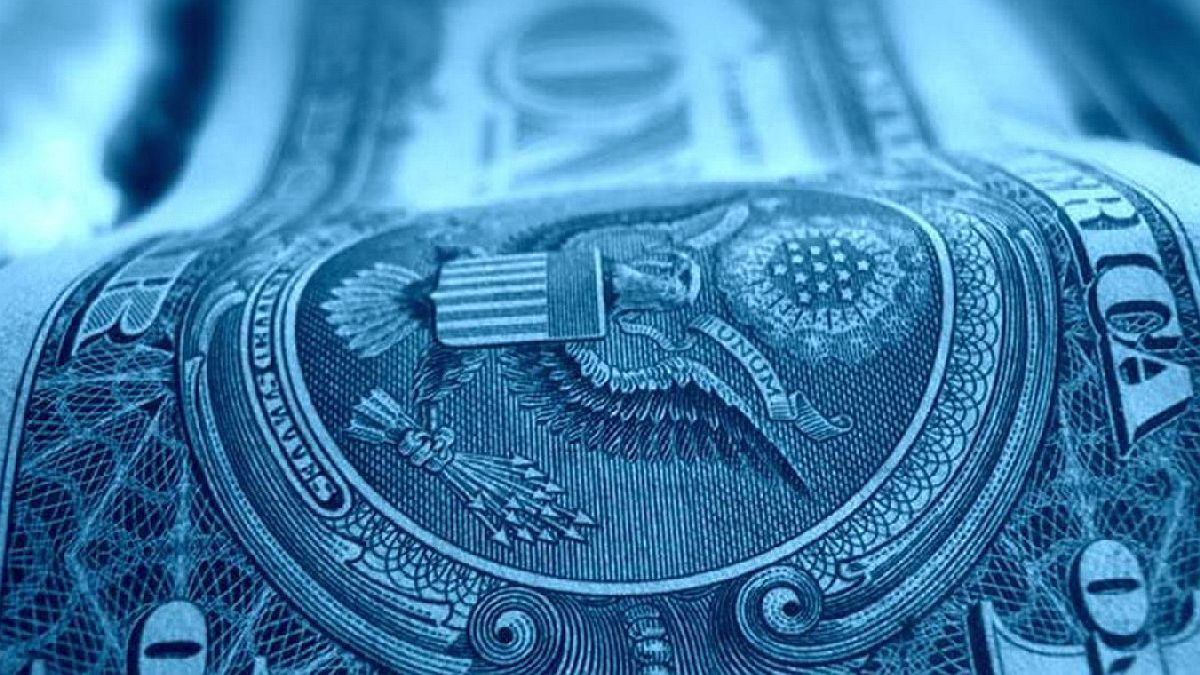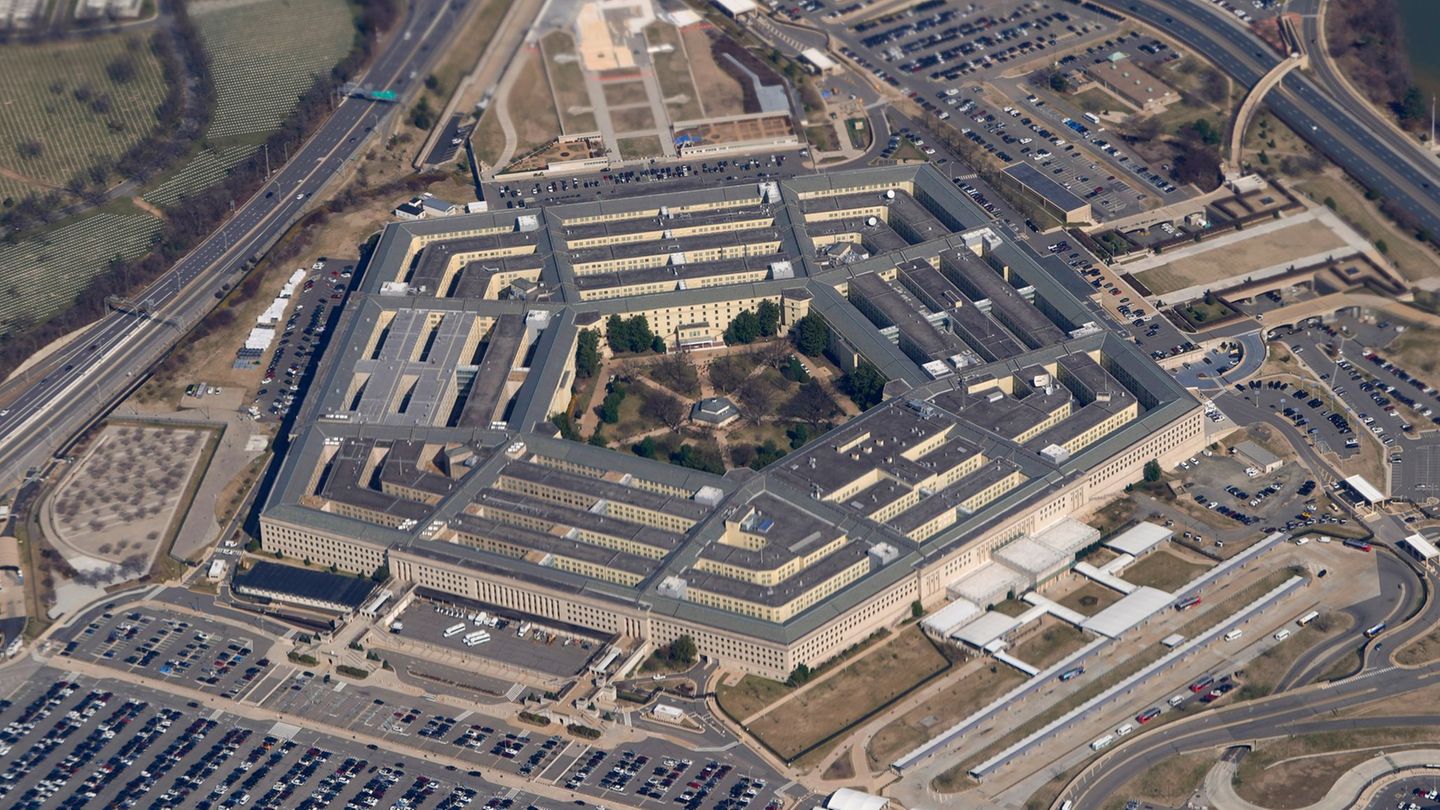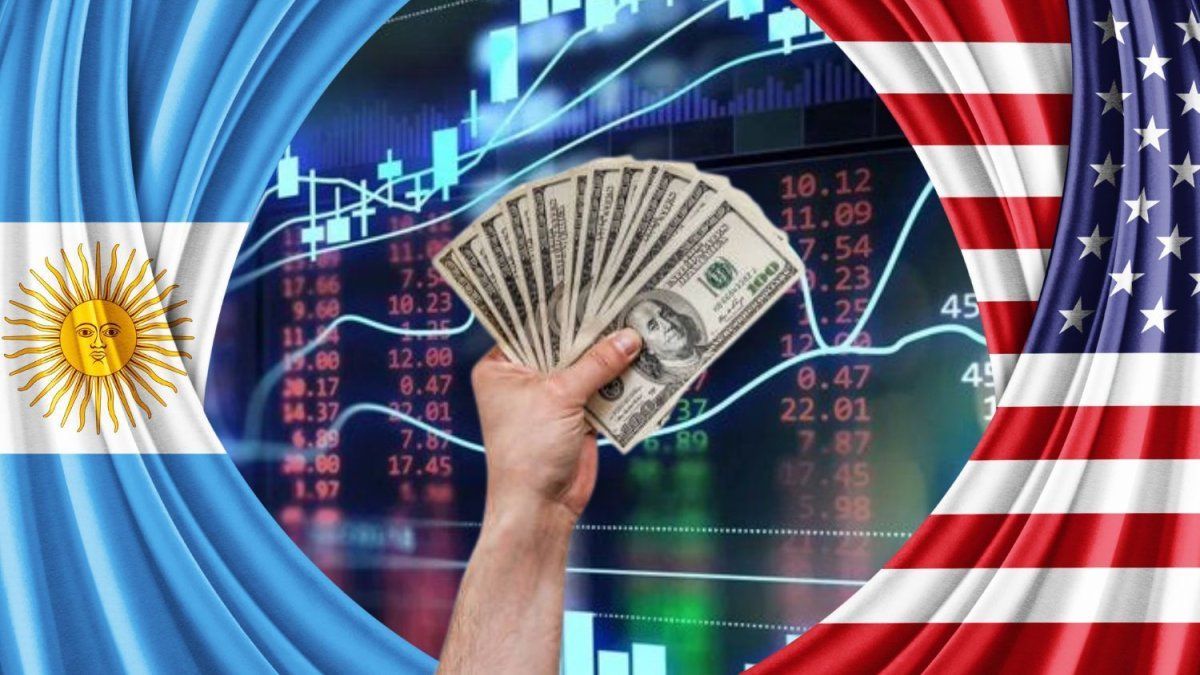Although they detect certain elements present in the ink of genuine banknotes, counterfeiters add these items and machines can no longer recognize them. Therefore, it is advisable to follow the traditional guide step by step to detect counterfeit dollars.
Fake dollars security measures 1.jpg
1. Touch them
First, to detect that the 100 and 20 dollar bills or some other denomination are false, touch is recommended as a first resort. The touch is used by cashiers in exchange houses and banks, since the texture of the counterfeit bill is coarser than the genuine one. Counterfeit banknotes present a kind of wax to the touch, when the genuine one is thinner but not fat.
2. Look at the color
According to Buenos Aires clerks, another unmistakable characteristic of a forgery is color. Authentic banknotes have pale and vivid color combinations that are very difficult to copy. The recommendation is to compare the colors with a genuine banknote.
In general, the color of the paper in the counterfeit dollar is very light, while in the genuine one it is amber (between a beige and a white tone). It also has bright tones and contrasts.
Fake dollars security measures 3.jpg
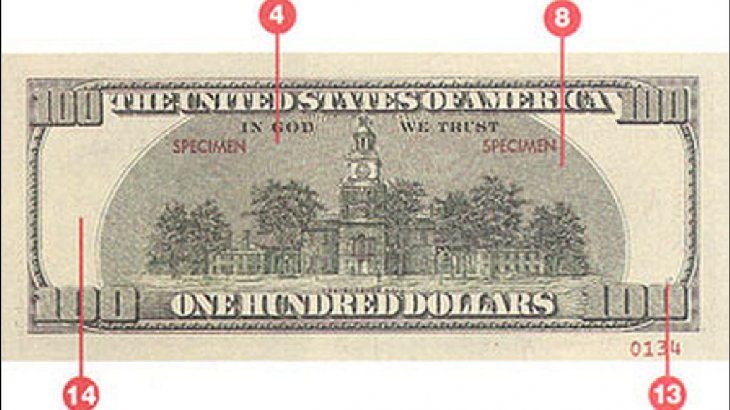
3. Look at the portrait on the bill
The genuine portrait seems “alive” and is well distinguished from the background, he maintains at the College. The fake has less detail and the edges blend into the background.
4. Pay attention to the edge of the bill
The fine lines on the edge of an original banknote are clear and close together. In a fake one, the lines are generally fuzzy and not distinguishable correctly.
Fake dollars security measures 2.jpg
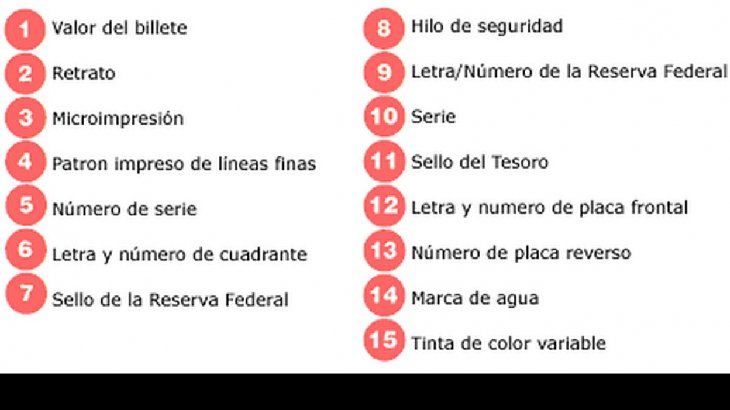
5. View the serial number
Genuine serial numbers have a distinctive style and are perfectly spaced. They are printed with the same ink as the Treasury seal. On a counterfeit bill the serial number differs in color and detail from the Treasury seal. It is also not well spaced and / or aligned.
6. Apply the rubbing technique
Folding the banknote with the index finger on the part where there is a drawing and color, it is rubbed on a paper (preferably white) which will leave a dark green mark, but it will not be scratched on the part that was rubbed, because if it is thus, the evidence indicates that it is a counterfeit bill.
7. Identify the watermark or “Water Drop”
This is one of the oldest security methods. Differences in thickness in the paper create dark and light areas, which generate an image against the light. They are imitated with greasy, wax or yellow ink prints.
Counterfeit 100 dollars present the Franklin figure in a very obvious way to see with the naked eye, which is not the case with real bills.
8. Segmented security thread
The parts of the filament appear on the front of the bill as silver segments. Counterfeiters mimic them by printing the segments with silver metallic ink. On genuine banknotes, when viewed against the light, a solid line is visible.
Under the magnifying glass, the lines on authentic banknotes look sharp, while counterfeits made with “laser” or trichromy look like little dots that create the illusion of a line.
9. Discover the strands with a magnifying glass
Silk threads or other fibers are added to the pulp of the paper. They can be seen with a magnifying glass. Counterfeiters imitate them with colored pencils.
Real dollars show a kind of fluff or pieces of brown thread on one of their two faces, while imitations lack them.
10. Use violet light
Under the violet light, the banknote has to retain its color, and all the images.
The Security Strip at Point 4 (banknote edge) appears in fluorescent color (without the text being read) on new 5, 10, 20 and 50 dollar bills. Not so in the u $ s100 bills, where you can see the band and the acronym can be read. If you can see the dark yellow stripe on the $ 100 bill, the bill is fake.
In some counterfeit notes, under purple light the paper turns completely white.
11. Where are the little colored hairs
The bill has some attached colored hairs, which do NOT stand out in the violet light.
How to detect if a blue 100 bill is fake
Fake dollars 100 blue security measures.jpg
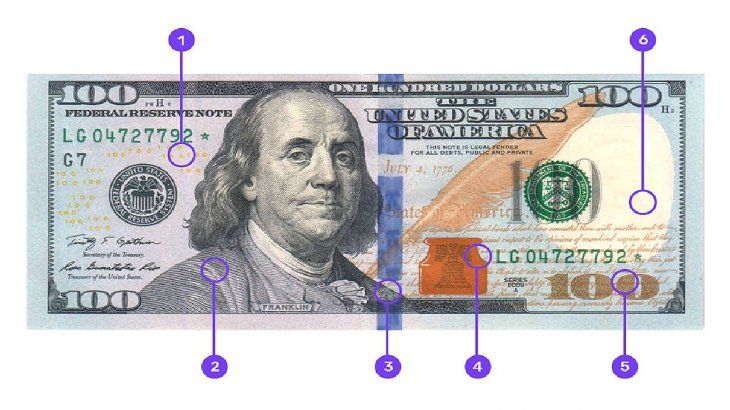
Although blued $ 100 bills are said to be anti-counterfeit, it is advised to take the same preventive measures as with other bills.
Courtesy: Safe Change
For the new blue-colored $ 100 bills, the security measures are similar. It is recommended to observe:
- Security thread
- Relief printing
- Seatbelt
- Bell and inkwell
- Color ink
- Watermark
Source From: Ambito
David William is a talented author who has made a name for himself in the world of writing. He is a professional author who writes on a wide range of topics, from general interest to opinion news. David is currently working as a writer at 24 hours worlds where he brings his unique perspective and in-depth research to his articles, making them both informative and engaging.

